This week readers “ask the Guru” about reroofing a pole barn with shingles, ventilation or new roof, vapor barrier to insulate properly, and insulating an existing pole barn without spray foam.
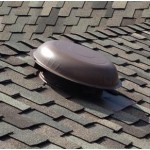 DEAR POLE BARN GURU: We have a pole barn it was purposely built to have an apartment upstairs; it originally was a stable below. It’s all living quarters now. We have had issues with the steel roof. We are switching to class 4 shingles. The building has no eaves as it has porches off both sides. We are working with a roofer. They are suggesting we use some ridged vent at the lower edge of the roof, by cutting a notch in the edge and installing it under the shingles and decking. That’s my understanding. Also, it will have a full ridge vent. The steel was applied on decking with tar paper under it. We have had leaking and condensation with it, as it is. Just wondering if you have any other ideas, or if the ridged vent at the lower edge of the roof will be a problem? It has 16″ deep trusses with blown in insulations above the sheet rock ceiling. Thanks for any input or ideas. JENNENE in RAPID CITY
DEAR POLE BARN GURU: We have a pole barn it was purposely built to have an apartment upstairs; it originally was a stable below. It’s all living quarters now. We have had issues with the steel roof. We are switching to class 4 shingles. The building has no eaves as it has porches off both sides. We are working with a roofer. They are suggesting we use some ridged vent at the lower edge of the roof, by cutting a notch in the edge and installing it under the shingles and decking. That’s my understanding. Also, it will have a full ridge vent. The steel was applied on decking with tar paper under it. We have had leaking and condensation with it, as it is. Just wondering if you have any other ideas, or if the ridged vent at the lower edge of the roof will be a problem? It has 16″ deep trusses with blown in insulations above the sheet rock ceiling. Thanks for any input or ideas. JENNENE in RAPID CITY
DEAR JENNENE: In my humble opinion, shingles of any sort are a poor investment. This is why: https://www.hansenpolebuildings.com/2018/10/ask-the-builder/
Installing steel roofing over “tar paper” was probably not a best design solution. A synthetic underlayment would work much better.
Call me a skeptic – I just do not believe you will have adequate air intake from vents as described. While gable end vents are not an ideal solution, they can at least be sized to afford adequate air flow. Here is what you should be looking at creating: https://www.hansenpolebuildings.com/2018/03/adequate-eave-ridge-ventilation/
If you have attic condensation currently, it is due to one or both of – improper/inadequate ventilation and/or not having proper exhaust ventilation inside your home. You may very well need to mechanically dehumidify to resolve this issue. As your building’s original purpose was to be a stable below, chances are good there is not a proper vapor barrier under your slab on grade. If so, this is further compounding your moisture issues and you may want to look into sealing your floor.
DEAR POLE BARN GURU: I’m in the middle of designing my Post Frame shop. I’m planning a 48’x64’x16′. I’m in climate zone 4a. I’ve been researching vapor barrier, radiant barrier and house wrap. I’m getting mixed info on the internet for my zone. Do I use vapor barrier? Can I use perforated radiant barrier in vapor barriers place? Where do I put it? And do I install it on the bottom of my trusses for blown in insulation? Hopefully my questions make sense. Thanks for any help at all. Respectfully, JUSTIN in LONDON
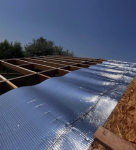 DEAR JUSTIN: In most instances a reflective radiant barrier is a waste of your hard- earned dollars. They can be (when properly sealed) an excellent vapor barrier, however using a perforated product takes away even this as a possible benefit. Walls – from out to in…. Siding, Omnidirectional housewrap over bookshelf wall girts, fill entire cavity with Rockwool insulation batts, well-sealed clear poly vapor barrier, interior finish. Roof – Order raised heel trusses (at least an inch taller heel than depth of blown in fiberglass (not cellulose) insulation). Order roof steel with an Integral Condensation Control factory applied. Vent eaves and ridge in correct proportions. No ceiling vapor barrier.
DEAR JUSTIN: In most instances a reflective radiant barrier is a waste of your hard- earned dollars. They can be (when properly sealed) an excellent vapor barrier, however using a perforated product takes away even this as a possible benefit. Walls – from out to in…. Siding, Omnidirectional housewrap over bookshelf wall girts, fill entire cavity with Rockwool insulation batts, well-sealed clear poly vapor barrier, interior finish. Roof – Order raised heel trusses (at least an inch taller heel than depth of blown in fiberglass (not cellulose) insulation). Order roof steel with an Integral Condensation Control factory applied. Vent eaves and ridge in correct proportions. No ceiling vapor barrier.
 DEAR POLE BARN GURU: I have an existing pole barn on property that I would like to insulate. I would like to steer away from spray foam but am worried as there is no Tyvek or vapor barrier on external side. What are my best options to void off any moisture issues and create a well insulated wall. JAMES in LAKE VILLAGE
DEAR POLE BARN GURU: I have an existing pole barn on property that I would like to insulate. I would like to steer away from spray foam but am worried as there is no Tyvek or vapor barrier on external side. What are my best options to void off any moisture issues and create a well insulated wall. JAMES in LAKE VILLAGE
DEAR JAMES: I would remove siding a wall at a time, place an omnidirectional building wrap over framing, then reinstall siding. Fill insulation cavity with Rockwool batts and use a well-sealed clear poly vapor barrier before interior finish.
 Perhaps the most disturbing trend of all is workmanship quality. One could write a book on all the possible causes, but first and foremost is the removal of the incentive in high school for young people to choose a trade as a rewarding career path. That’s a grave mistake, in my opinion, and you and millions of others are paying for it by dealing with more and more inept, uninspired tradespeople, who seemingly are the new normal.
Perhaps the most disturbing trend of all is workmanship quality. One could write a book on all the possible causes, but first and foremost is the removal of the incentive in high school for young people to choose a trade as a rewarding career path. That’s a grave mistake, in my opinion, and you and millions of others are paying for it by dealing with more and more inept, uninspired tradespeople, who seemingly are the new normal.
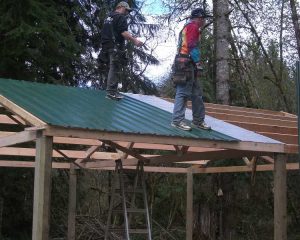 DEAR JIM:
DEAR JIM: 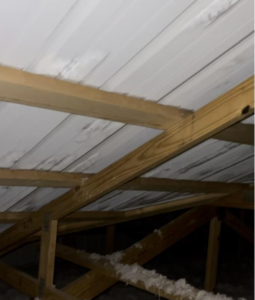 DEAR RICH:
DEAR RICH: 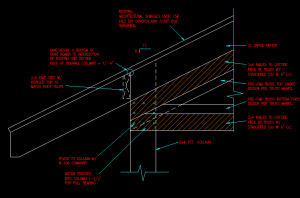
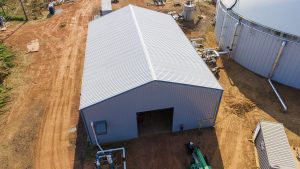 When I first began providing building kits in the Midwest, I was stymied by the number of clients in Michigan who were asking for shingled roofs, instead of steel.
When I first began providing building kits in the Midwest, I was stymied by the number of clients in Michigan who were asking for shingled roofs, instead of steel.





